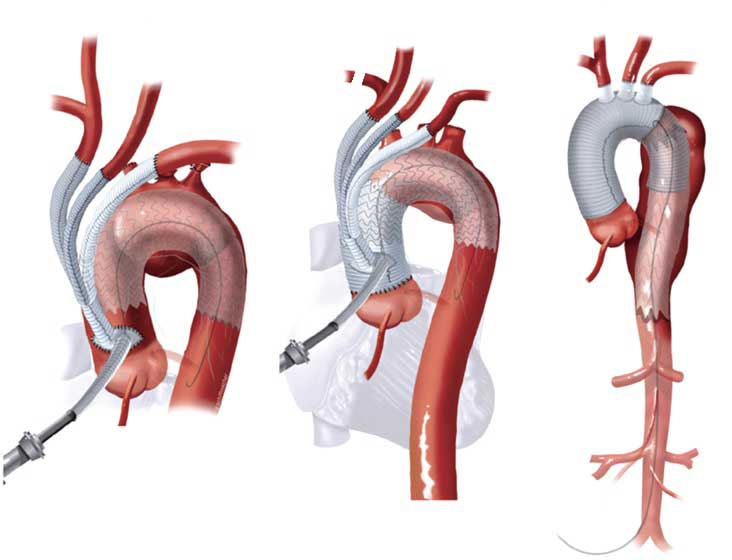Aortic aneurysm treatment is crucial for preventing fatal complications of this silently progressing disease. Both monitoring and timely intervention are necessary to prevent life-threatening conditions such as rupture (vessel tearing). In this article, we discuss in detail the potential consequences of aortic aneurysm, prevention methods, and current treatment approaches.
What Consequences Can an Aortic Aneurysm Lead To?
The greatest danger of an aortic aneurysm is the risk of rupture that occurs when the vessel diameter reaches a certain point. This can cause sudden and rapidly progressing internal bleeding. The survival rate after rupture is quite low; therefore, a diameter of 5 cm is considered critical for surgical intervention.
Additionally, some ascending aortic aneurysms can cause aortic valve leakage, leading to conditions such as heart murmur or heart failure. This poses additional cardiological risks.
Can Aortic Aneurysm Be Prevented?
While aortic aneurysm cannot be completely prevented, controlling certain risk factors can reduce the likelihood of its occurrence. Two factors are particularly important:
- Smoking: Weakens the aortic wall and increases the risk of aneurysm.
- Hypertension: Accelerates the expansion process by increasing pressure on the vessel wall.
Managing these factors can significantly reduce the risk. However, genetic factors (such as Marfan Syndrome) cannot be changed. Therefore, regular check-ups are vital for individuals with a family history.
Additionally, although not yet widespread in our country, implementing early screening programs for high-risk individuals is important for preventive health care.
Aortic Aneurysm Treatment Methods
The treatment approach is determined based on the location, size of the aneurysm, and the patient’s overall health condition. Treatment options are mainly divided into two categories:
1. Open Surgical Method
This is preferred especially for aneurysms in the ascending aorta and arch sections. In this method:
- The chest bone is opened.
- The heart is temporarily stopped and connected to a heart-lung machine.
- The enlarged vessel section is removed and replaced with an artificial vessel (graft).
This method is preferred for younger patients in good general condition. However, the recovery period is relatively long.
2. Endovascular Method (Minimally Invasive Surgery)
This is suitable for abdominal aortic aneurysms and some thoracic aneurysms. The procedure is performed through a small incision in the groin area:
- A special stent-graft is placed inside the vessel.
- The enlarged section is bypassed internally with this stent.
This method is lower risk, especially for elderly individuals or those with comorbidities. Additionally:
- The intensive care period is shorter.
- The risk of infection and blood loss is minimal.
- The patient is usually discharged within 1-2 days.
However, it may not be suitable for every patient. The shape of the vessel and the condition of the area where the stent will be placed are important.
3. Hybrid Method
For aneurysms involving the arteries to the brain, a combination of open and endovascular surgery is used. This method typically involves:
- Performing a bypass to the brain arteries without stopping the heart.
- Then, an endovascular graft is placed to neutralize the enlarged area.
This procedure should be performed in equipped settings called hybrid operating rooms.

Conclusion: Early Diagnosis and Correct Method Save Lives
Aortic aneurysm is a disease that can be fatal if left untreated but can be successfully treated with early diagnosis. Aortic aneurysm treatment should be personalized according to the patient’s condition. Especially individuals in high-risk groups should not neglect routine check-ups.
